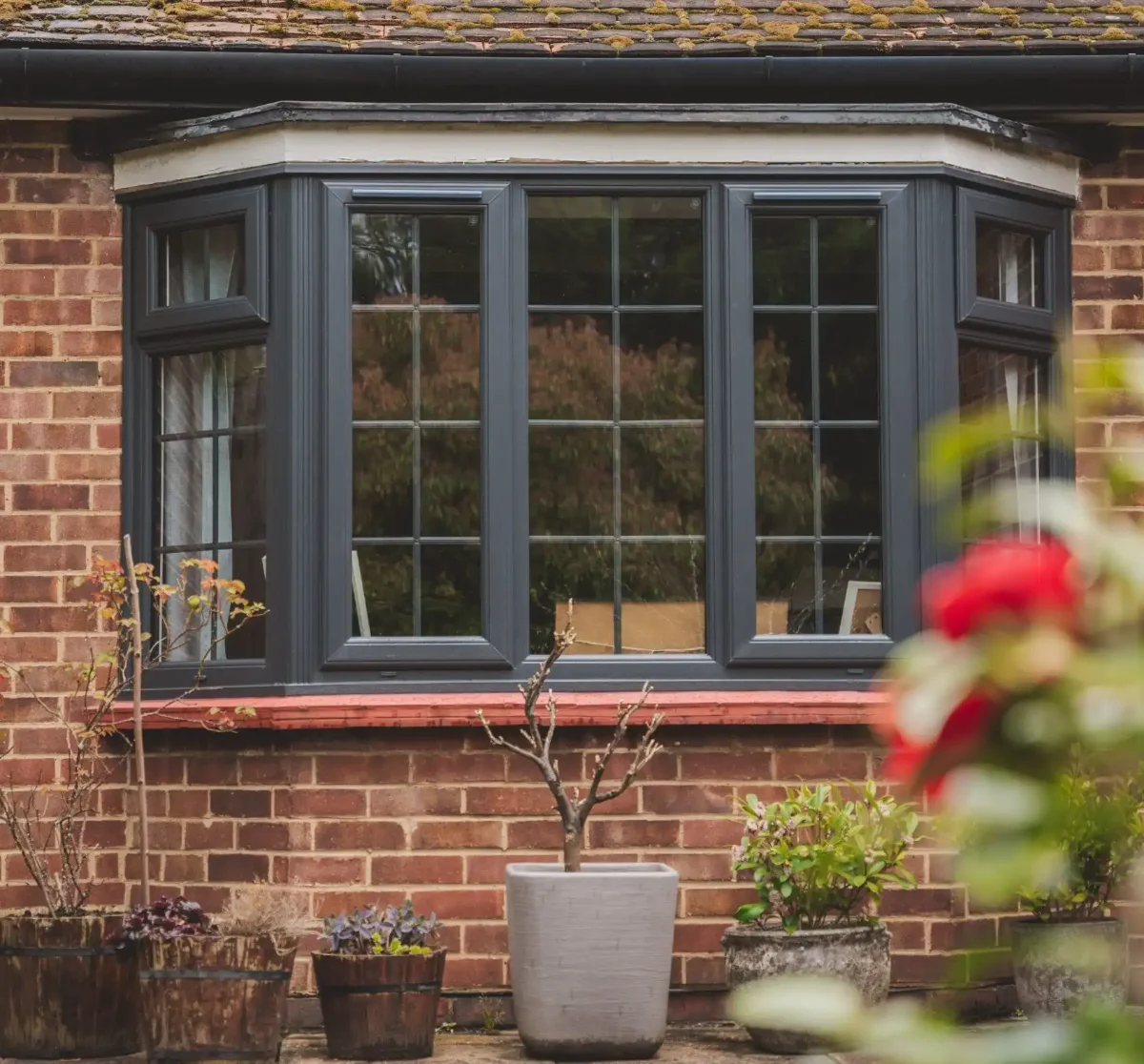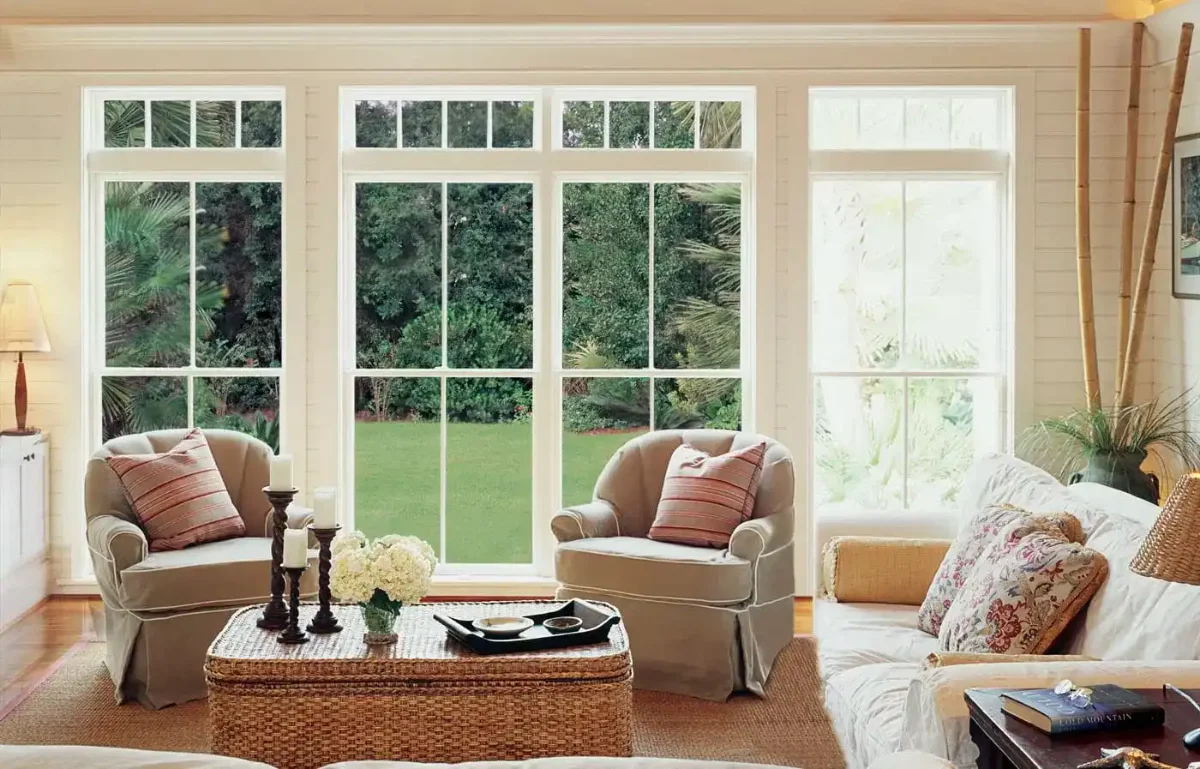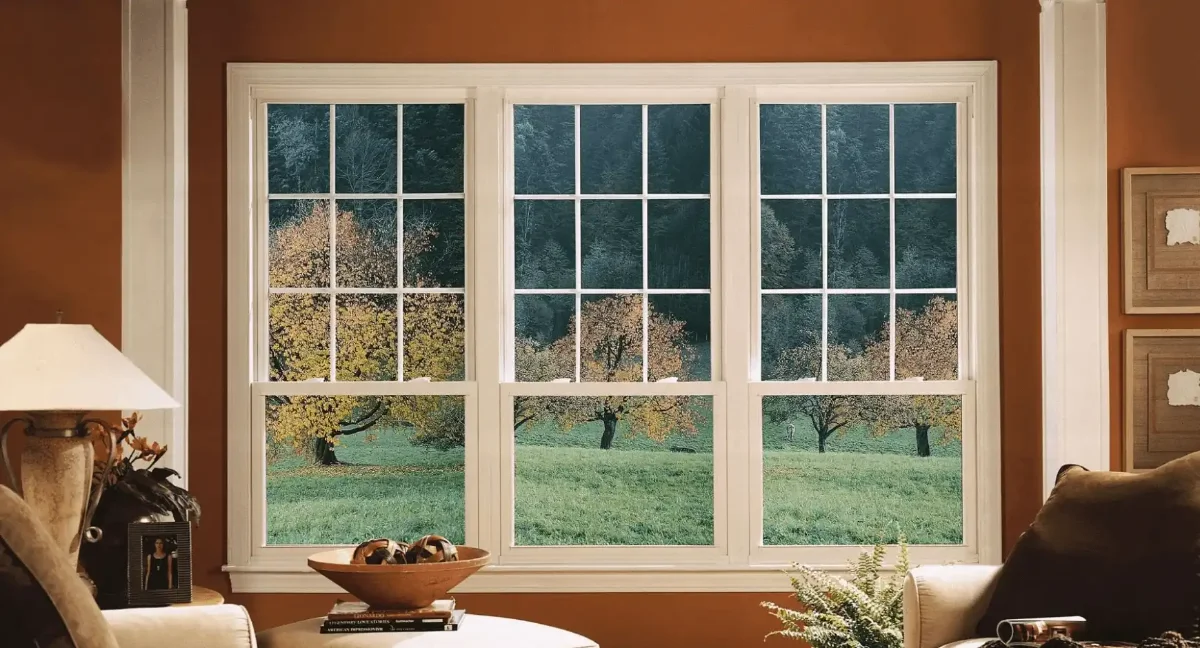Best Windows for Noise Reduction in Bishop’s Stortford: Your Complete Guide
Tired of being woken by early morning traffic? Struggling to enjoy your garden because of road noise? Living near busy roads, the railway line, or Bishop’s Stortford’s town centre brings many benefits, but noise pollution isn’t one of them.
I’m Oliver Greene, and in my 38 years in the window industry, I’ve helped hundreds of Bishop’s Stortford residents transform their homes from noisy to peaceful. Today, I’ll share everything you need to know about choosing windows that dramatically reduce noise – from the science behind acoustic glazing to the best solutions for different budget levels.
Whether you’re dealing with constant traffic hum or occasional aircraft noise from Stansted’s flight path, I’ll show you exactly which windows deliver the quiet comfort you deserve.
Ready to enjoy a quieter home? Get expert advice on acoustic windows from our noise reduction specialists who understand Bishop’s Stortford’s unique sound challenges.
Understanding Noise and How Windows Affect It
Before choosing acoustic windows, it’s important to understand how sound travels and how windows can block it:
How Sound Works:
- Frequency: Measured in Hertz (Hz) – from low rumbles to high-pitched sounds
- Volume: Measured in decibels (dB) – from whispers (30dB) to traffic (70dB)
- Sound transmission: How noise passes through materials and air gaps
- Resonance: When materials vibrate at specific frequencies
Common Noise Sources in Bishop’s Stortford:
- A1184 traffic: Constant road noise at 60-70dB
- Railway line: Intermittent train noise at 75-85dB
- Aircraft: Periodic overhead noise at 65-75dB (Stansted flight path)
- Town centre activity: Variable urban noise at 50-65dB
- Neighbours: Occasional noise at 45-60dB
How Windows Affect Noise:
- Mass: Heavier glass blocks more sound
- Air gaps: Larger spaces between panes improve acoustic performance
- Sealing: Air leaks allow sound transmission
- Resonance frequency: Different glass thicknesses reduce different frequencies
The Science of Acoustic Glazing
Understanding acoustic principles helps you choose the most effective windows:
Key Acoustic Concepts:
Sound Reduction Index (Rw)
This measures a window’s noise reduction performance:
- Single glazing: Rw 25-30dB reduction
- Standard double glazing: Rw 30-35dB reduction
- Acoustic double glazing: Rw 35-45dB reduction
- Triple glazing: Rw 40-50dB reduction
Glass Specifications for Noise Reduction:
- Different thicknesses: Asymmetric glazing (e.g., 6mm + 4mm) performs better than symmetric (4mm + 4mm)
- Laminated glass: Plastic interlayer dampens vibrations
- Acoustic interlayers: Specialized materials for maximum sound reduction
- Cavity width: Larger gaps (16mm+) improve performance
Oliver’s Take: The Real-World Difference
In my 38 years of experience, I’ve measured the actual noise reduction in Bishop’s Stortford homes. Here’s what different windows achieve in practice:
Single glazing to standard double glazing: Reduces noise from “intrusive” to “noticeable” – you’ll still hear traffic clearly but conversations become easier.
Single glazing to acoustic double glazing: Reduces noise from “intrusive” to “background” – traffic becomes a gentle hum that won’t interrupt sleep or conversation.
Single glazing to triple glazing: Reduces noise from “intrusive” to “barely audible” – exceptional performance but at significant cost.
The difference between standard and acoustic double glazing is often more noticeable than between acoustic double and triple glazing.
Best Window Types for Noise Reduction
Different window materials and styles offer varying acoustic performance:
uPVC Windows for Noise Reduction
Advantages:
- Excellent sealing: Multi-chamber frames reduce sound transmission
- Cost-effective: Good acoustic performance at reasonable cost
- Easy maintenance: Seals stay effective longer than timber
- Consistent performance: Factory-controlled manufacturing standards
Acoustic Performance:
- Standard uPVC double glazing: 30-35dB reduction
- Acoustic uPVC double glazing: 35-40dB reduction
- Triple glazed uPVC: 40-45dB reduction
Best For:
- Modern properties requiring cost-effective noise reduction
- Homes where heritage appearance isn’t critical
- Properties needing maximum performance per pound spent
Timber Windows for Noise Reduction
Advantages:
- Natural mass: Dense timber provides inherent sound dampening
- Customizable: Frames can be designed for optimal acoustic performance
- Heritage appeal: Maintains character in period properties
- Upgrade potential: Can accommodate thicker acoustic glazing
Acoustic Performance:
- Timber double glazing: 32-38dB reduction
- Acoustic timber double glazing: 38-43dB reduction
- Triple glazed timber: 42-48dB reduction
Best For:
- Period properties in conservation areas
- Homes where appearance is equally important as performance
- Properties requiring bespoke acoustic solutions
Aluminium Windows for Noise Reduction
Advantages:
- Precision manufacturing: Excellent sealing and consistent gaps
- Slim profiles: Maximizes glass area for acoustic performance
- Durability: Seals maintain effectiveness over time
- Modern aesthetics: Suits contemporary properties
Acoustic Performance:
- Aluminium double glazing: 30-36dB reduction
- Acoustic aluminium double glazing: 36-42dB reduction
- Triple glazed aluminium: 40-46dB reduction
Best For:
- Contemporary properties with large windows
- Commercial properties requiring acoustic performance
- Homes where slim sightlines are preferred
Glass Specifications for Maximum Noise Reduction
The glass specification is crucial for acoustic performance:
Standard Double Glazing (4mm + 4mm)
- Acoustic performance: 30-35dB reduction
- Cost: Base level pricing
- Suitability: Light traffic noise, general improvement
Acoustic Double Glazing (6mm laminated + 4mm)
- Acoustic performance: 35-40dB reduction
- Cost: 20-30% premium over standard
- Suitability: Moderate traffic noise, good value solution
High-Performance Acoustic (6.8mm acoustic laminated + 6mm)
- Acoustic performance: 40-45dB reduction
- Cost: 40-50% premium over standard
- Suitability: Heavy traffic, railway noise, maximum double glazing performance
Triple Glazing Acoustic (6mm laminated + 4mm + 6mm)
- Acoustic performance: 42-48dB reduction
- Cost: 60-80% premium over standard double glazing
- Suitability: Extreme noise situations, ultimate performance
Specialized Acoustic Glazing
- Acoustic interlayers: Maximum noise reduction for specific frequencies
- Asymmetric specifications: Different glass thicknesses for broader frequency reduction
- Custom solutions: Engineered for specific noise problems
Window Styles and Acoustic Performance
Different window opening styles affect noise reduction:
Casement Windows
- Sealing: Excellent when properly installed with compression seals
- Acoustic performance: Best overall performance due to tight sealing
- Maintenance: Seals need periodic adjustment and replacement
Sash Windows
- Traditional: Original sash windows have poor acoustic performance
- Modern: Well-designed sash windows can achieve good noise reduction
- Sealing challenges: More complex sealing arrangements
Tilt and Turn Windows
- Superior sealing: Multiple seal points around entire perimeter
- Acoustic performance: Excellent due to compression sealing system
- Ventilation: Tilt position allows ventilation with reduced noise
Fixed Windows
- Maximum performance: No opening mechanisms compromise sealing
- Best acoustic results: Ideal for windows facing noise sources
- Limitation: No ventilation capability
Cost vs. Performance Analysis
Understanding the cost-benefit relationship helps optimize your investment:
Performance Improvements by Investment Level:
| Investment Level | Typical Cost | Noise Reduction | Suitable For |
|---|---|---|---|
| Standard double glazing | £400-600/window | 30-35dB | Light traffic noise |
| Acoustic double glazing | £500-750/window | 35-40dB | Moderate traffic noise |
| High-spec acoustic double | £650-900/window | 40-45dB | Heavy traffic/railway |
| Triple glazing acoustic | £800-1200/window | 42-48dB | Extreme noise situations |
Value Assessment:
- Best value: Acoustic double glazing provides 80% of maximum possible improvement at 60% of triple glazing cost
- Premium performance: Triple glazing for properties with severe noise issues
- Budget option: Standard double glazing still provides significant improvement over single glazing
Installation Factors Affecting Acoustic Performance
Even the best acoustic glazing can fail without proper installation:
Critical Installation Elements:
Frame Sealing
- Continuous seals: No gaps around frame perimeter
- Compression seals: Proper compression when window closes
- Frame-to-wall sealing: Acoustic sealant around frame edges
- Quality control: Professional installation standards
Cavity Wall Considerations
- Cavity insulation: Prevents sound transmission through walls
- Reveal insulation: Reduces flanking noise around window opening
- Thermal bridging: Minimize cold spots that affect sealing
Ventilation Solutions
- Acoustic ventilation: Specialized systems for fresh air without noise
- Trickle vents: Properly designed to minimize sound transmission
- Heat recovery: Mechanical ventilation with acoustic treatment
Oliver’s Installation Quality Tips
After 38 years, I know that installation quality affects acoustic performance as much as window specification:
1. Seal Quality: Use acoustic-grade sealants, not standard decorators’ caulk 2. Frame Alignment: Perfectly square and plumb installation ensures proper seal compression 3. Glazing Installation: Proper glazing techniques prevent rattling and air gaps 4. Testing: Check operation and sealing before final handover
Poor installation can reduce acoustic performance by 20-30%, regardless of window quality.
Addressing Specific Noise Challenges in Bishop’s Stortford
Different locations require tailored acoustic solutions:
Properties Near A1184
Challenge: Constant traffic noise at 60-70dB Solution: Acoustic double glazing with 6mm laminated glass Expected reduction: Traffic noise becomes background hum Cost-effectiveness: Excellent value for money
Homes Near Railway Line
Challenge: Intermittent high-volume train noise at 75-85dB Solution: High-performance acoustic glazing or triple glazing Expected reduction: Train noise reduced to tolerable levels Special consideration: Address low-frequency rumbling
Properties on Stansted Flight Path
Challenge: Periodic aircraft noise at 65-75dB Solution: Acoustic double glazing with broad-frequency reduction Expected reduction: Aircraft noise significantly diminished Special consideration: High-frequency engine noise requires specific glass specification
Town Centre Properties
Challenge: Variable urban noise including voices, vehicles, and activity Solution: Standard to acoustic double glazing depending on specific location Expected reduction: Creates peaceful interior environment Additional benefits: Enhanced privacy and security
Secondary Glazing as an Alternative
For period properties or budget-conscious homeowners:
When Secondary Glazing Makes Sense:
- Listed buildings: Where window replacement isn’t permitted
- Budget constraints: Lower cost than complete replacement
- Rental properties: Less permanent modification
- Seasonal use: Removable for summer months
Secondary Glazing Performance:
- Noise reduction: 15-25dB improvement
- Cost: 40-60% of replacement window cost
- Limitations: Less effective than replacement, visual impact
- Maintenance: Additional cleaning and operation
Maintenance for Acoustic Performance
Maintaining noise reduction requires ongoing attention:
Regular Maintenance Tasks:
- Seal inspection: Check for gaps or deterioration
- Hardware adjustment: Ensure proper compression when closed
- Glass cleaning: Remove dirt that can affect acoustic properties
- Lubrication: Keep operating mechanisms smooth
Signs of Acoustic Performance Loss:
- Increased noise levels: Gradual return of external sounds
- Visible seal damage: Cracked or compressed seals
- Difficult operation: Windows not closing properly
- Air leaks: Feeling drafts around frames
Professional Maintenance:
Annual professional inspection ensures continued acoustic performance and can identify issues before they become serious problems.
Frequently Asked Questions
What’s the best type of window for reducing traffic noise in Bishop’s Stortford?
For maximum noise reduction in Bishop’s Stortford, choose windows with acoustic laminated glass and different pane thicknesses. Double glazing with 6mm acoustic glass can reduce noise by 35-40dB, while triple glazing can achieve 45-50dB reduction. Frame sealing is equally important.
How much noise reduction can I expect from new windows?
Modern double glazing typically reduces noise by 30-40dB compared to single glazing. This transforms loud traffic noise (70dB) into barely audible background sound (30-40dB). The actual reduction depends on glass specification, frame quality, and installation standards.
Are triple glazed windows worth it for noise reduction in Bishop’s Stortford?
Triple glazing provides excellent noise reduction but costs 40-60% more than quality double glazing. For most Bishop’s Stortford locations, acoustic double glazing offers the best value. Triple glazing is worth considering for properties on very busy roads or near the railway line.
Can I retrofit acoustic glass to existing window frames?
Sometimes, but it depends on frame condition and glazing bead design. Retrofitting is often 60-70% of new window cost with less effective sealing. For properties with noise issues, complete window replacement usually provides better value and performance.
Creating Your Quiet Haven
Choosing the right acoustic windows transforms your home from a place where external noise intrudes to a peaceful sanctuary where you can truly relax. The key is matching the solution to your specific noise challenges and budget.
My advice after 38 years? Don’t underestimate the impact of quality installation. The best acoustic glazing in the world won’t perform if poorly fitted. Choose experienced installers who understand both the products and the installation techniques needed for maximum noise reduction.
Remember, your windows will serve you for 20-25 years. Investing in proper acoustic performance pays dividends in comfort, sleep quality, and enjoyment of your home every single day.
Ready to enjoy peaceful, quiet living? Contact our acoustic window specialists for expert advice tailored to your Bishop’s Stortford location. We’ll assess your specific noise challenges and recommend the most effective, cost-efficient solution for your home.
About the Author: Oliver Greene has 38 years of experience in the UK window industry and specializes in acoustic solutions for homes in Bishop’s Stortford and Hertfordshire. He has helped hundreds of families achieve peaceful, comfortable homes through expert window selection and installation.



![Common Window Installation Mistakes & How We Avoid Them [Bishop's Stortford]](/images/windowsbishopsstortford-blogimages/dommoore_2018_mccarter_april_300dpi-3821-scaled_compressed-geotagged.webp)

